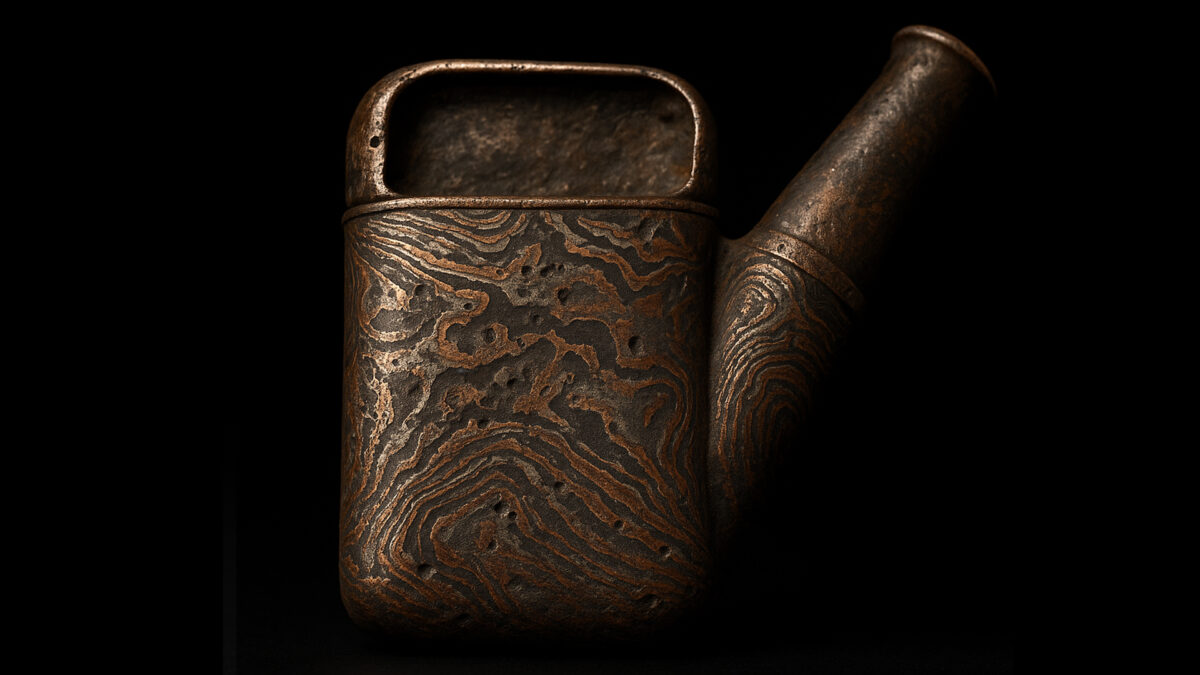- Tradition and innovation intersect in “metal poetry”
- 1. Introduction
- 2. Why Mokume-Gane is Recognized as Contemporary Art
- 3. Artistic Characteristics of Mokume-Gane
- 4. Evolving Techniques in Mokume-Gane Expression
- 5. Case Studies: Artists and Artworks
- 6. Shifting Exhibition and Market Landscapes
- 7. Challenges in Artistic Development
- 8. Future Possibilities
- 9. Conclusion
- 10. Notes and Disclaimers
- 11. References
Tradition and innovation intersect in “metal poetry”
Table of Contents
- Introduction
- Why Mokume-Gane is Recognized as Contemporary Art
- Artistic Characteristics of Mokume-Gane
- Evolving Techniques in Mokume-Gane Expression
- Case Studies: Artists and Artworks
- Shifting Exhibition and Market Landscapes
- Challenges in Artistic Development
- Future Possibilities
- Conclusion
- Notes and Disclaimers
- References
1. Introduction
Mokume-gane, a Japanese metalworking technique that originated in the Edo period for sword fittings, has evolved into a decorative approach used in tea utensils, incense holders, and modern jewelry. Once confined within traditional craft, this technique is now being reinterpreted as contemporary art.
This article explores the background of this reappraisal, its unique strengths as artistic expression, real-world examples, and technical or expressive challenges—with insight from both research and craft.
2. Why Mokume-Gane is Recognized as Contemporary Art
Unique Visual Effect: Natural Patterns in Man-Made Material
Though entirely fabricated, Mokume-gane patterns evoke organic phenomena like tree rings, clouds, waves, or spirals. This aligns closely with themes in contemporary art:
- Nature vs. Artificiality
- Chance vs. Intention
One-of-a-Kind Quality
No two patterns are ever the same—even with the same design. This makes Mokume-gane inherently suited to the artistic pursuit of uniqueness and individuality, in contrast with reproducible product design.
Aesthetic Precision Beyond Western Metalwork
While techniques like Damascus steel exist in the West, Japanese Mokume-gane excels in delicate, intentional control of visual effect—drawing attention from contemporary jewelry artists and sculptors worldwide.
3. Artistic Characteristics of Mokume-Gane
| Perspective | Artistic Value |
|---|---|
| Materiality | Metal expresses natural textures like wood or water |
| Serendipity | Patterns are discovered through carving |
| Layered Depth | Visual depth adds temporality and complexity |
| Precision | Technical craftsmanship becomes an artistic element |
| Conceptuality | Metaphors of cutting, revealing, layering |
4. Evolving Techniques in Mokume-Gane Expression
Technical Advancements
- Controlled twisting and warping for fluid or wave patterns
- CNC and laser integration: blending sculpture with pattern
- Collage-style pattern extraction for 2D and 3D compositions
New Materials
| Material | Artistic Benefit |
|---|---|
| Titanium | Modern luster via coloration |
| Stainless Steel | High contrast and futuristic finish |
| Palladium | Fusion of weight and brightness |
| Recycled Metals | Sustainability and ethical awareness |
Note: These materials may pose challenges for bonding and remain in experimental use.
New Forms and Applications
- Large-scale sculptures and installations (e.g., public art, architecture)
- Wall-mounted compositions using multiple Mokume panels
- Performance art: integrating sound or motion of carving
5. Case Studies: Artists and Artworks
James Binnion (USA)
A pioneer of Mokume Gane Jewelry. Studied traditional Japanese techniques and adapted them into contemporary jewelry. Known for describing the moment patterns appear as if “the metal begins to speak.”
Chris Ploof (USA)
Combines Mokume-gane, Damascus steel, and even meteorite alloys into modern art pieces.
Kunio Takada (Japan)
Based in Kyoto. Has studied and produced Mokume-gane for over 20 years. Creates wedding jewelry and continues deep academic research.
Note: Some examples may reflect “Mokume-like” or layered-metal techniques rather than traditional Mokume-gane.
6. Shifting Exhibition and Market Landscapes
From Craft to Art Market
- Traditional Craft Shows: judged by technique and heritage
- Art Fairs and Galleries: value expressive and conceptual fusion
In the art market, Mokume-gane pieces are treated as “artworks” rather than “crafts,” influencing pricing and display approaches.
7. Challenges in Artistic Development
| Challenge | Description |
|---|---|
| Reproducibility | Difficult to create series works due to unique patterns |
| Cost and Time | Labor and material intensive; results in higher pricing |
| Public Understanding | Still largely seen as traditional craft, not contemporary art |
| Durability and Display | Metals can oxidize or scratch easily, affecting preservation |
8. Future Possibilities
3D Printing + Mokume-gane
Experiments with 3D milling to generate patterns and optimize layer structures. Still theoretical, but programmable Mokume-gane may become feasible in the next few years.
Integration with Media Art and NFTs
- Use of AR/VR to simulate pattern emergence
- NFT sales of unique pattern data (prototype stage)
Sustainability and Ethical Art
- Laminated structure supports use of recycled metals
- Potential for alignment with SDGs and ethical design
9. Conclusion
Mokume-gane is more than a traditional craft. Its interplay of chance and intention, temporal layering, and poetic carving transforms it into a medium of contemporary expression.
It continues to unlock new dimensions in form, material, and meaning.
10. Notes and Disclaimers
- Some featured artists and projects involve Mokume-inspired or layered-metal techniques rather than strict traditional Mokume-gane
- AR and AI applications are still technically constrained and in early research stages
11. References
Refer to the original Japanese article for all references and source material.

